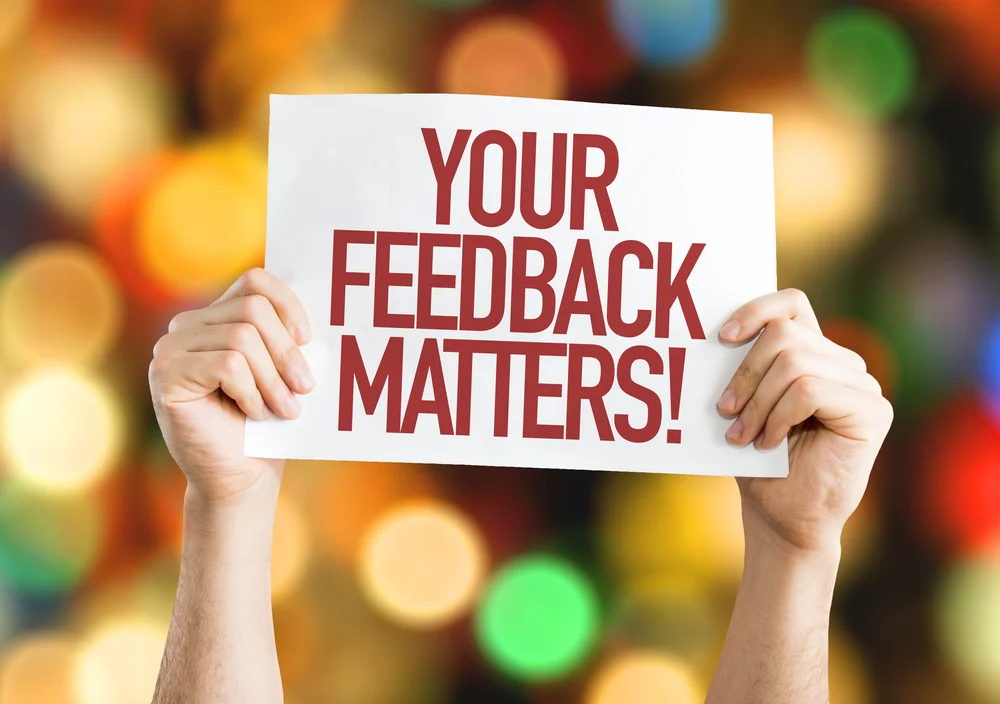Top 4 Ways to Implement More Efficient Queue Lines

6 Feb 2023
Different businesses have different needs. That much is clear to anybody, especially company managers or owners. But there’s one type of need that drives every single business in the world: efficiency.
Higher levels of efficiency mean cutting costs, improving productivity, and ultimately serving more customers. Every company wants to be more efficient.
Implementing better queue lines is how customer-facing businesses improve their efficiency. You should understand the best way to queue your customers, average queue times at your company, and the metrics your employees are performing well or poorly at.
If this sounds like a lot to keep track of, that’s because it is. Staying on top of your queueing through manual labor alone feels like defeating the purpose of improving organizational efficiency in the first place because you’ll be spending hours just logging and analyzing data. At the end of the day, most organizations relying on traditional queueing just don’t think about improving their queues at all.
But there are ways to improve the queue experience for your customers and implement a more effective queue line.
What is a Queue?
To address the issues of queues, first, let’s take a look at what they mean and answer some commonly asked questions about queues at large.
What exactly is a “queue”?
A queue line is a line of people or objects sequenced in an order to wait their turn for service.
The following are all examples of queues:
- People standing in order at the desk of a car dealership, waiting for their turn to get serviced by the dealership agents.
- Government service agency where people receive tickets from a kiosk machine informing them of their spot in the line. They can wait there or leave for a break provided they return when their turn is called.
- Lines at a bank tracked by an online queue management system. The people are numbered by virtual ticketing and step up when it’s their turn. They are free to track their progress from anywhere, including home.
With modern queue technology, you should no longer be allowing customers to spend boring hours in line doing nothing. Your clients want a fruitful queueing experience, and you need to be prepared to bring this to them.
So, how do you actually spell it? Is it “queue” or “queu” or “qeue”? And is it “queuing or queueing”?
“Queue” is the correct spelling. Neither “queu” nor “qeue” are correct under any situation.
As for whether it’s queuing or queueing? Queueing is the correct spelling. While your clients will probably understand what you’re saying no matter whether you say queuing or queueing, the latter is the actual correct spelling.
“Queue” can be used as a noun or verb. For example, you can say that someone queued or queued up for food in a food court. If you’re scheduling social media posts through a posting tool and have your most recent Instagram post prepared, you could queue it up.
What is a circular queue?
Despite what it sounds like, a circular queue has nothing to do with a queue line of people who end up forming a circle.
A circular queue is a linear data structure with a fixed size buffer. It operates on the “first-in, first-out” (FIFO) principle where the first position is connected to the last, linking the whole queue together end to end (hence the name of “circular queue”). It’s effective at buffering data streams due to its circular structure.
While a circular queue is an interesting concept, it has nothing to do with queueing up your customers.
What is an invisible queue?
An invisible queue is actually a type of customer queue, although it specifically refers to queues where customers don’t know where their place in the line is.
The “invisible queue” practice is not recommended for in-person queueing or ticketing systems, since not knowing their place in the line will only lead to discontent among customers. It more often refers to call center queueing where customers are on hold.
The logic behind an invisible queue is that when you don’t tell customers how long they’ve been waiting, they’re less likely to complain about queue times. It’s more applicable to phone queues since customers have greater freedom to wander around at home and have no need to physically show up to their appointments.
After defining these terms, let’s move on to take a look at how you can implement a better queue line.
Top 4 Ways to Implement A More Efficient Queue Line

Here’s the deal. You can’t implement a great queueing system without understanding the best way to queue it up in general. Here are recommendations for top ways to streamline your queueing experience.
- Timeliness
- Deliver on Expectations
- Listen to Customer Feedback
- Review Your Queueing
1. Timeliness
Time is money. This saying doesn’t just apply to you, but to your customers as well. They want to get through your queue lines as quickly as possible. In retail, people get frustrated after two minutes of no apparent movement through a line. While acceptable wait times may vary per business, customers want to know that they’re making progress and that the end is in sight.
Obviously, when it comes to queue times, there are some factors outside of your immediate control. You can’t deliver what every customer wants perfectly, but you can work on the timeliness of the overall process.
Here are a few tips for improving the queue times in your business:
- Reflect on how long each part of your queueing experience takes. Are customers spending too long on check-in? Do they stand in line for 30 minutes with nothing happening? You need to take time to consider each component of your client’s waiting experience and reflect on whether or not it’s necessary for your company. For example, ticketing may slow down a retailer queue but improve progress in an airline company.
- Show progress. This is less about picking up the speed and more about demonstrating to your customer that their queue time isn’t spent in vain. Make sure they are moving forward in the line every few minutes. This is why organizations employ multiple service windows. Show their approximate wait time, or update the ticketing number being served to give them a feeling of moving forward.
- Check-in during idle times. Why do airlines distribute forms right before the queue for customs? When people are filling out forms while they queue, they’re completing the check-in process while they queue, saving overall time. This can also be done by allowing customers to fill out check-in forms ahead of time or through an online appointment booking and registration system.
- Allow online payment. Same logic as the above guideline. When your customers can pay from home, they’ll no longer waste time fumbling with credit cards at the head of the line. This will reduce not just individual wait time, but also the wait time for everyone else in the same queue.
- Implement online queueing. The easiest way to clear out physical queue times is to move most queueing online. Letting customers check-in and receive updates through their phones will make the physical queues far less crowded, ensuring a faster wait for customers who do wait in-person.
Granted, these are only a few general tips to help you improve your waiting time. You may have to figure out what works for your company’s business model through trial and error. Maybe your problem is not enough personnel, or too much crowding. Either way, the most important thing is to think critically about the queueing process and eliminate every inefficiency that’s causing a queue blockage.
2. Deliver on Expectations
Business is predicated on expectations. Your customers have expectations for how you can help them, whether consciously or not, and they’ll get irritated when these expectations are broken. It’s your job to keep things moving smoothly to prevent customer dissatisfaction.
How do you deliver on expectations in the first place?
- Research the norm. Industry expectations will be the biggest factor in shaping what your customers expect from you. If you’re running an auto services company, for example, you might find that customers are willing to wait for an hour on-site during repairs. Use that information to update your service.
- Tell customers the waiting time. Despite the way an invisible queue may work for phone queues, it’s recommended to tell customers what they should expect in terms of wait time or service procedure. Experiencing uncertainty during waiting can lead to feelings of stress and powerlessness, which will only result in a worse overall waiting experience. Updating your customers on how long they have to keep waiting will keep them happy.
- Be clear and fair. Transparency in waiting reduces uncertainty as well. Don’t offer preferential treatments without justifying them. For example, people are fine with gold pass holders jumping ahead in amusement park lines because they know those customers paid more, and the fact that they’re waiting in a separate line makes it easier not to think of them as “cheating ahead”.
Doing justice to customer expectations will require you to step into the shoes of your clients. Think about waiting from their perspective. What will they deem unfair? Do they want to know about the internal logic of waiting in line for your business? What are their prior expectations? Can you do anything to stand out in terms of queueing experience compared to competitors?
Of course, whether or not you want to be transparent about everything when it comes to waiting is your choice. There are advantages to withholding queueing information sometimes. Check out this chart comparing the pros and cons of being transparent about queue times.
Queue Times Transparency: Pros and Cons
| Pros | Cons |
| Removing uncertainty will help customers feel empowered | Displaying wait time may result in increased impatience |
| Having a destination gives customers something to look forward to | Long wait times can lead to complaints |
| Business can appear proactive in resolving issues and moving the line forward | |
| Knowing the wait time will make it feel shorter (known as Appointment Syndrome) |
Whatever you decide, thinking things out fully is how you’ll be able to implement a better queue line and an improved queue experience as well.
3. Listen to Customer Feedback

Customers want to know that their opinion matters. The best way to cater to your clients is to listen to them and discover what they want. Only one out of 26 clients will actually bring up complaints. Ignoring that complaint translates to 26 customers lost.
Of course, it isn’t just as simple as letting them write an essay on their waiting experience. You’ll need to guide them through answering pertinent questions about what it was like to stand in your queues. Ask them questions like:
- What was your least favorite part of the waiting experience?
- Are you satisfied with the length of the line?
- Did the customer service representatives satisfy your needs?
- What’s missing from this queueing experience?
Your line might be too boring, too long, not have enough customer service attendance, or require more online options. Who knows? You certainly won’t know unless you take the initiative to ask.
Be proactive about collecting customer feedback, but also about implementing it. For return customers, seeing their feedback taken into account is gratifying and will lead to more repeat business. Plus, it will just improve your business all around.
4. Review Your Queueing
It bears reminding that just because you’ve improved your service by reviewing it once or twice doesn’t mean you should stop there. Set a periodic reminder to review your queueing experience. Periodic reviews mean you’ll be able to stay up-to-date on:
- Integrating customer feedback
- Keeping up with industry norms
- Removing inefficiencies
- Implementing new queueing technology
- Analyzing worker performance
- Reviewing profitability
Stagnation is the enemy of progress. You won’t see truly impressive returns unless you keep working at improving your queueing. Your business isn’t rigid, and you shouldn’t be either.
Why Implement a Queue Management System?
Believe it or not, a queue management system can help you with everything mentioned above. The right queue management system:
- Saves employee time. No more spending hours on scheduling appointments. An automated queueing solution will do it all for you.
- Reduces customer queue times. 74% of customers will switch to your competitor if they perceive them to have a shorter wait time. Reducing queue times is about retaining your customers. For them, queueing on their phone probably won’t feel like queueing at all. They don’t have to be onsite until it’s their turn. You’re giving them the freedom to do what they want with their time, which is the best customer experience of all.
- Improved customer satisfaction. Queueing online, automated reminders, online check-in, and more. Queue management systems are bound to make your customers happy.
- Delivers relevant data. With a solid queue management solution, you’ll be able to collect data on customers and agent performance that will help you make better business decisions over time.
Each individual queueing tool has its own abilities. These are just the basics that it can help you with.
How to Evaluate a Queue Management Software

Let’s say you’re interested in procuring a queue management solution for your business, without experience in purchasing queue management tools. How should you judge your queueing solution?
Here are the top criteria you should be evaluating your queue management software by.
- Industry Relevance
- Flexibility
- Look and Feel
- Reporting: Data Visibility
- Integration Capabilities
- Implementation
- Price
Criteria 1: Industry Relevance
Queue management tools are not the same. There are as many types of tools as there are industries out there.
You have two options here: either go with an industry-specific solution or pick something that’s general.
Here’s the general recommendation: if you’re operating from a highly specialized industry, it might be best to pick a tool designed for your industry. A hospital will likely require scheduling software that’s designed for use at a medical institution, since it might come with capabilities for queueing, doctor-patient communications, and lab integration, just to name a few.
On the other hand, a car accessories store might just need the basics in terms of queue management.
Ultimately it’s your decision. If you want to try out a solution without the commitment, scheduling software like Skiplino offers a free trial so you can see what feels right.
Criteria 2: Flexibility
Your company needs flexibility. Whether it’s scaling, expanding online, or just trying to implement 24/7 booking, appointment booking software can help you expand to accommodate all those needs.
Let’s compare how traditional queueing compares to scheduling software in terms of flexibility.
| Traditional Queueing | Appointment Booking Software | |
| Scaling | More customers = larger location, more customer service representatives | Scales with the business |
| Availability | Customer service representatives work more hours, resulting in higher business costs | 24/7 availability due to automated scheduling |
| Remote Customer Service | Needs to integrate phone queueing or booking | Schedules remote and in-person appointments at the same speed |
The right queue management software should support your business when it’s time to expand, and scale alongside you without holding you back.
Criteria 3: Look and Feel
Design is a major aspect of how well your customers will be able to use your scheduling software to book an appointment.
You don’t want your software to be
- Cluttered
- Confusing
- Complicated
- Distracting
- Difficult
Ideally, you’ll also be able to customize the look and feel of your booking software to fit your branding.
Criteria 4: Reporting: Data Visibility

As mentioned above, collecting customer feedback is how you improve your business. The right booking software should be able to help you do that and organize information in an intuitive format that’s easy to act upon.
Proper reporting should document:
- Queue times
- Customer satisfaction
- Agent performance
- Peak and low business hours
Make sure your software can deliver the right kind of feedback for your business.
Criteria 5: Integration Capabilities
Every business has its own software tool suite. Your queueing software should integrate seamlessly into the technology you’re already using. This may include:
- Online calendar
- Communications platform
- Payment processing
If your scheduling tool is industry-specific, it should also integrate into the industry tool suite you use for your company.
Criteria 6: Implementation
Implementing appointment booking software can be challenging. What matters is making sure you have sufficient support to integrate it into daily use for your business.
Does the software have:
- Great customer support? Solid customer support means timely responses to product queries and a rich database of responses to commonly asked questions so customers have options for answering their own questions.
- Employee training/guidelines? Your employees will need to gain hands-on experience with the software. Do they provide resources to support this kind of training?
- Localization? Can the software match your language and local systems? What’s more, will it work on your devices?
- Compatibility for users? Your return customers are probably accustomed to whatever solution you’re using now. Does your new software have a simple implementation and integration plan for the customer end?
On your end, you’ll need to think about internal best practices for scheduling software. How much of your scheduling do you want to automate? Will you integrate it with current technology? What’s your plan for integrating it into your systems?
Criteria 7: Pricing
You can’t just queue it–this is a consideration that needs to be addressed upfront. Pricing should be a top consideration for your booking software.
The best course of action here is to decide on an acceptable price range upfront. Use it to guide your search. Know whether you’re more willing to compromise on functionality or price.
Don’t forget to check in with your organization on budget flexibility.
Summary
Hopefully, you’ve learned plenty about implementing an efficient queue line now. From changing the way you approach queueing to integrating a queueing solution, you’ll need to commit to investing effort into transforming the way you treat queueing.
Are you interested in finding a smart appointment booking software that’s flexible for any kind of business? Try out Skiplino, the intelligent cloud-based scheduling platform that will ramp up your queue line efficiency today.
Latest



Similar Reads


All Rights Reserved @2025 Skiplino Technologies WLL.




